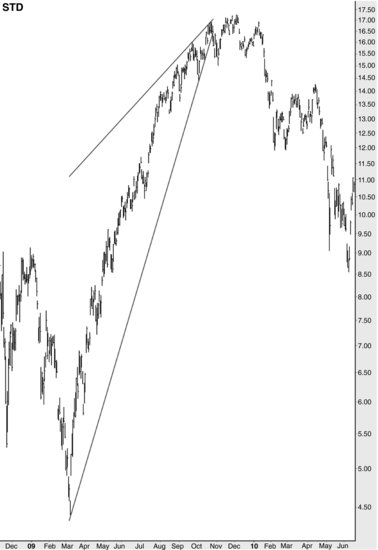Chapter 4
Ascending Wedges
When price bars are confined by an ascending trendline beneath and another trendline above, and these lines converge on the right side, this is called an ascending wedge. The pattern highlights price action that, although moving higher, is becoming increasingly confined. Because the lower trendline is the most vulnerable to being violated, this pattern is a reliable bearish indicator when and if the price bars slip beneath support. This pattern has a close relative in the form of the descending wedge, which is covered in another chapter.
DEFINITION OF THE PATTERN
The pattern requires just two lines: Both of them are ascending, but they are not parallel. Instead, they converge on the right side, although the price bars may break beneath the lower trendline well before this intersection.
Figure 4.1 shows Banco Santander (symbol STD), which went down 44 percent in price after its ascending wedge was broken. Take note that the price didn't just plunge straight down after the pattern broke. On the contrary, the stock went on to a new high a few weeks thereafter. However, the pattern's long formation and break to the downside was an important harbinger of the forthcoming movement of the stock, which was decidedly to the downside.
FIGURE 4.1 STD's ascent was long-lived and substantial before it finally gave in to selling pressure.

PSYCHOLOGY BEHIND THE PATTERN ...

